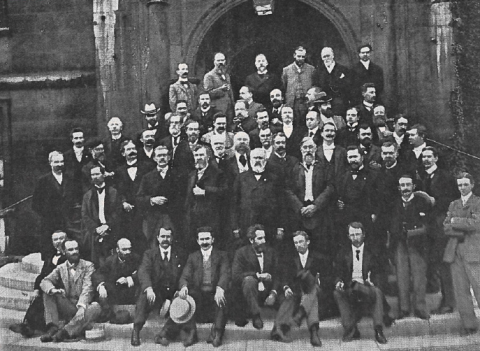Unveiling a new electrolytic treatment for peri-implantitis
Dr Urs R. Brodbeck
WDC Speaker on Therapy of Peri-implantitis and Aesthetic Dentistry
Tell us about the new electrolytic approach to cleaning infected implants: how does this method contribute to prevention and treatment of peri-implantitis?
The aim of my lecture is to present an overview of the different treatment options for peri-implantitis. I’ll outline a treatment concept for peri-implantitis with all the different metrics for success, from preventing further bone loss to complete re-osseointegration. I’ll also introduce a very promising electrolytic approach for implant decontamination.
In this electrolytic approach, the implant serves as a cathode and the rinsing liquid gets activated by the anode when a low electrical voltage is applied to it. Hydrogen cations then penetrate the biofilm of the contaminated implant surface and take electrons when they reach the metallic implant. This causes bubbles of hydrogen gas to develop right at the implant surface, which dislodge and remove contaminants without causing damage to the titanium microstructure. This method works in different grades of titanium, alloys, surfaces, brands and macro designs of implants and completely removes biofilm.
What are the benefits of working with ceramic as a restorative material, especially for patients with high aesthetic demands?
Ceramics have gone though dramatic developments over the last few decades, and their material properties have changed significantly. Combined with innovations and improvements in adhesive technology, new possibilities with ceramics enable us to restore single teeth and to replace missing teeth for patients with high aesthetic demands. Nowadays, clinicians have a wide variety of ceramic products available to them for restorations. They can make metal-free restorations and work in a non- or minimally invasive way. This may help to preserve the natural tooth structure and lower the risk of pulp damage.
"Ceramics have gone through dramatic developments over the last few decades, and their material properties have changed significantly."
In my lecture, I’ll discuss how to treat patients with high aesthetic demands. I’ll present small edge-ups and full veneers, inlays/onlays and partial crowns, full crowns, three-unit and multi-unit bridges, adhesive cantilever bridges, and posts for implants and non-vital teeth.
What could be contributing to increasing rates of peri-implantitis?
The literature shows that the rates of peri-implantitis cannot be ignored by clinicians any longer. Higher rates may be due to ever-greater numbers of people having dental implant surgery; these implants have also been in place for ever-greater periods of time. Certainly, several published reviews of treatment options conclude that no treatment modality achieves a satisfactory long-term outcome. Therefore, I believe the successful treatment of peri-implantitis is relevant to any dentist caring for patients with implants.
Find out more...
The World Dental Congress (WDC) is a flagship event for FDI, strengthening ties and fostering collaboration within the global oral health community.


